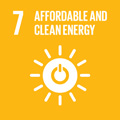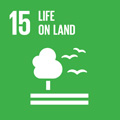- Docente: Giorgio Gasparotto
- Credits: 8
- SSD: GEO/06
- Language: Italian
- Teaching Mode: Traditional lectures
- Campus: Bologna
- Corso: First cycle degree programme (L) in Geological Sciences (cod. 8015)
-
from Feb 18, 2025 to May 22, 2025
Learning outcomes
The students will learn the foundamentals on the science of mineralogy. Main goal are: - to knowledge of structures, crystal chemistry and classification of minerals; - to identify rock-forming minerals, their physical properties, occurrences; - to introduce analytical methods like x-ray diffraction and polarizing light microscope; - to identify mineral in hand specimen and thin section.
Course contents
Definition of mineral. Chemical bonding in crystals. Atomic and ionic radii. Compact packings of spheres, coordination polyhedra, Pauling's rules. Some model structures: diamond, graphite, ZnS, NaCl, CaF2, FeS2, Mg(OH)2, Al(OH)3 (layered structures), CaCO3. Structural classification of silicates. Elements of crystallochemistry: solid solutions, binary systems with complete miscibility (forsterite-fayalite, albite-anorthite), diagrams with solvus, examples of natural systems (orthoclase-albite system, calcite-magnesite), binary systems with peritectic (leucite-silica). Binary systems with eutectic. Polymorphism: phase rule, classification of polymorphism, order-disorder (feldspars: sanidine, orthoclase, microcline), hints on polytypism.
Elements of morphological symmetry and stereographic projection (limited to orthorhombic and tetragonal systems; only hints on other systems). Elements of symmetry in crystal lattices, Bravais lattices. Defects in crystals, dislocations.
Physical properties of minerals: scalar and vector properties. Density (specific gravity), melting point, brittleness, elasticity, hardness and Mohs scale, cleavage, piezoelectricity, magnetic properties, color.
X-rays and their applications. Diffraction according to Bragg. The powder method and the diffractometer.
Optical mineralogy with laboratory exercises and recognition of the most important minerals for a geologist.
Systematics of the major minerals that make up rocks: olivines, garnets, pyroxenes, amphiboles, micas, feldspars, quartz, calcite. Systematics of some important minerals: Sulfides: galena, blende, pyrite, chalcopyrite. Oxides: corundum, hematite, spinels, magnetite. Halides: rock salt, fluorite. Carbonates: calcite, aragonite, dolomite, siderite, malachite. Sulfates: gypsum, barite. Silicates: quartz, K-feldspar, plagioclase, olivine, garnets, pyroxenes (augite), amphiboles (hornblende), phyllosilicates (serpentine, muscovite, biotite), beryl, leucite, zeolites.
Elements of georesources and notes on major minerals of industrial interest. Minerals and the environment: environmental and health problems related to minerals and mining (asbestos, dust, acid mine drainage processes).
Readings/Bibliography
C.K. Klein, A.R. Philpotts - Mineralogia e petrografia, Zanichelli 2018.
C. KLEIN - Mineral Science, Wiley.
D. Perkins - Mineralogy, Prentice Hall.
W.A. Deer, R.A. Howie & J. Zussman - An introduction to the
Rock-Forming Minerals. Longman Scientific & Technical
A. PECCERILLO e D. PERUGINI - Introduzione alla petrografia
ottica, Morlacchi editore.
Teaching methods
The course consists of 5 CFU (40 hours) of lectures and 3 CFU (36 hours) of classroom and laboratory exercises.
The exercises will consist of modules on the following topics:
Symmetry in crystals
The physical properties of minerals
Laboratory of optical mineralogy
Techniques for studying minerals
Recognition of major minerals of geological interest
Assessment methods
The examination test is written. Five questions will be offered in the examination test, including one general question, one specific question on rock constituent minerals, one optics question and one exercise. The test has a duration of 2 hours. The examination is completed by an interview in which it is required to recognize and give a brief description of 2 minerals chosen from the most common and, if necessary, provide clarification or supplementation on the written test.
Teaching tools
Specimens of minerals and rocks
Models of crystals and structures of minerals
Optical microscope and thin sections of minerals and rocks
Software for visualisation of crystal structures
Office hours
See the website of Giorgio Gasparotto
SDGs



This teaching activity contributes to the achievement of the Sustainable Development Goals of the UN 2030 Agenda.
